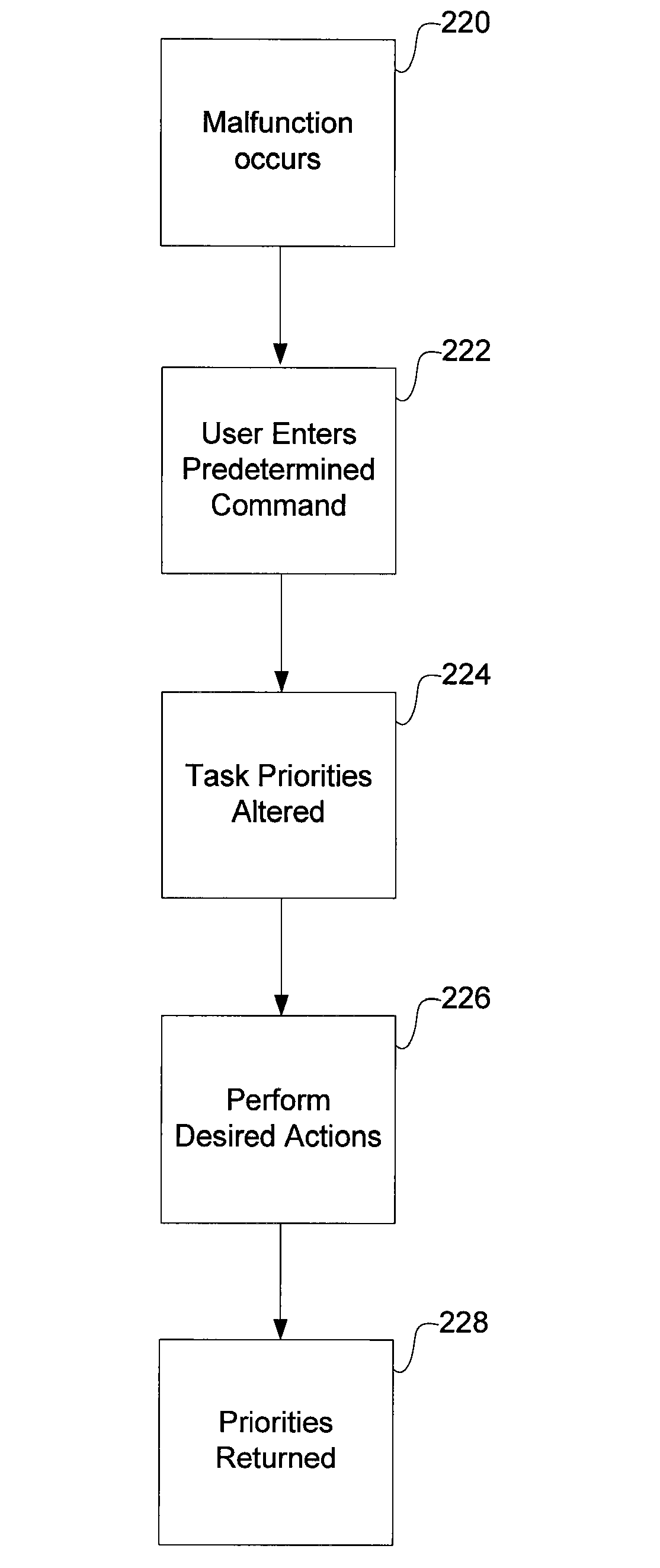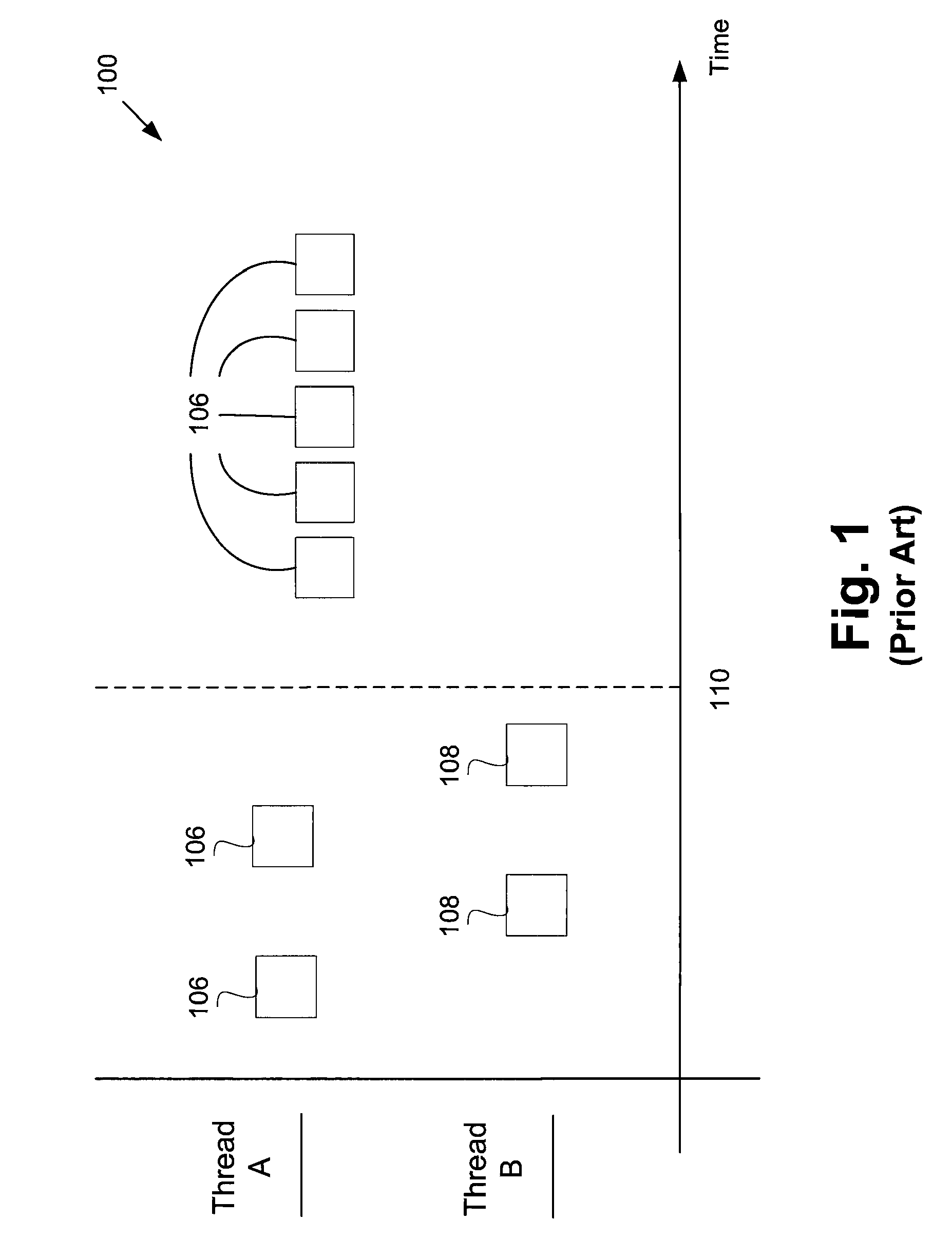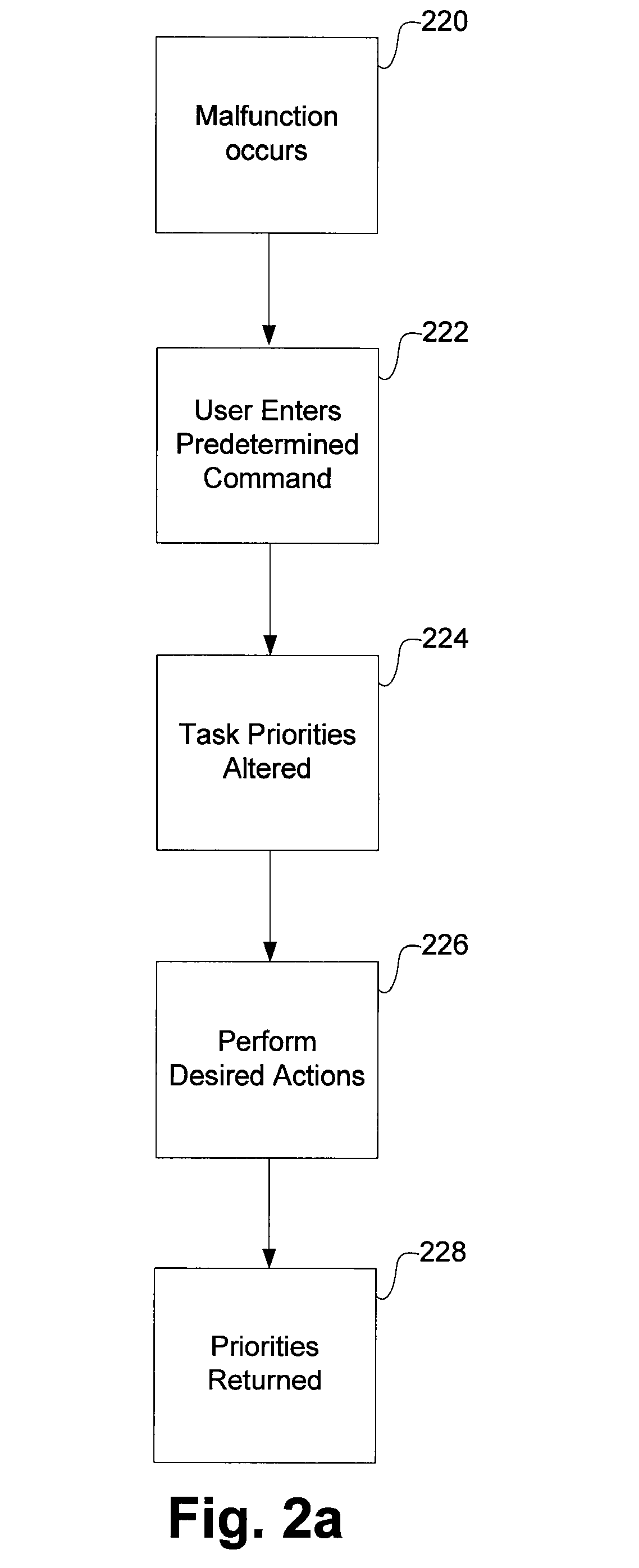User control of task priority
a task priority and task technology, applied in the field of computer systems, can solve problems such as problems for users, pauses in music or other problems with music playback, and inability to playback quality, so as to achieve the effect of solving or working around
- Summary
- Abstract
- Description
- Claims
- Application Information
AI Technical Summary
Benefits of technology
Problems solved by technology
Method used
Image
Examples
first embodiment
[0033]FIG. 4 is an event diagram that illustrates how the components described above with respect to FIG. 3 operate together to allow user control of task priority. In a first embodiment, the input device, such as a mouse 324, keyboard 322, or other input device, sends an interrupt, known as a user control interrupt 402 to a port 320 in response to a predetermined user action. This user control interrupt 402 initiates actions that allow the user control of task priority. The user action that prompts generation of the user control interrupt 402 sent to the port 320 can be arbitrarily predetermined. For example, any combination of keystrokes on the keyboard 322 could be used as the predetermined user action. Other input devices, or even a dedicated “task priority” input device can also be used to generate the user control interrupt 402.
[0034]The port 320 to which the input device is connected receives the user control interrupt 402. The user control interrupt 402 causes the port 320 t...
second embodiment
[0044]The user control event 406 causes the event thread module 312 of the window server 308 to send a request 408 to the thread list 310 to elevate the priority of the threads stored in the thread list 310. The thread list 310 then sends a scheduling request signal 410 to the thread scheduler 318 to elevate to high priority the threads in the thread list 310. In one example of this second embodiment, the thread list 310 only includes a few threads or a single thread. For example, the thread list 310 may include only the thread of the window server 308. This means that instructions of the window server 308 thread will be executed, and not be starved of instructions by a malfunctioning high priority thread.
[0045]The window server 308 thread that has been raised in priority makes thread calls 502 to other threads and applications 302, 304, 306, 326. These calls may be initiated through the normal operation of the window server 308, by the window server 308 receiving further user input...
PUM
 Login to View More
Login to View More Abstract
Description
Claims
Application Information
 Login to View More
Login to View More - R&D
- Intellectual Property
- Life Sciences
- Materials
- Tech Scout
- Unparalleled Data Quality
- Higher Quality Content
- 60% Fewer Hallucinations
Browse by: Latest US Patents, China's latest patents, Technical Efficacy Thesaurus, Application Domain, Technology Topic, Popular Technical Reports.
© 2025 PatSnap. All rights reserved.Legal|Privacy policy|Modern Slavery Act Transparency Statement|Sitemap|About US| Contact US: help@patsnap.com



